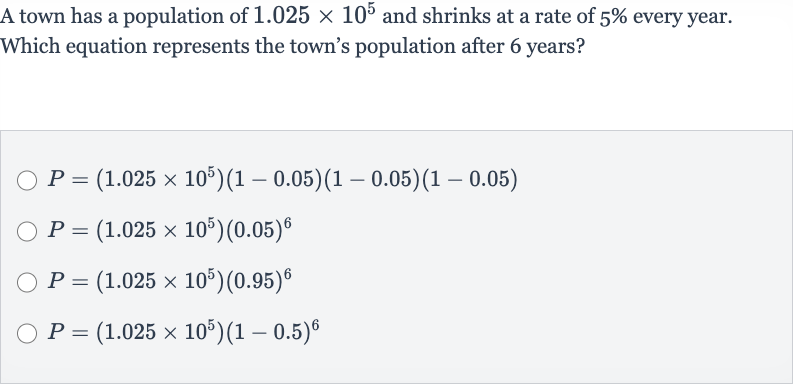Full solution
Q. A town has a population of and shrinks at a rate of every year. Which equation represents the town's population after years?
- Identify Population and Rate: Identify the initial population and the annual shrink rate.The initial population is given as , and the town shrinks at a rate of % every year, which means the population is multiplied by % (or .) each year.
- Determine Formula for Population: Determine the correct formula to represent the population after years.Since the population decreases by a constant percentage each year, this is an exponential decay problem. The general formula for exponential decay is , where is the initial population, is the decay rate, and is the time in years.
- Substitute Values into Formula: Substitute the given values into the exponential decay formula.The initial population is , the decay rate is . (%), and the time is years. Plugging these values into the formula gives us .
- Simplify Equation: Simplify the equation to find the correct answer.The correct equation after simplifying is , which matches one of the provided options.
More problems from Write linear and exponential functions: word problems
QuestionGet tutor help
QuestionGet tutor help
QuestionGet tutor help
QuestionGet tutor help
QuestionGet tutor help
QuestionGet tutor help
QuestionGet tutor help

